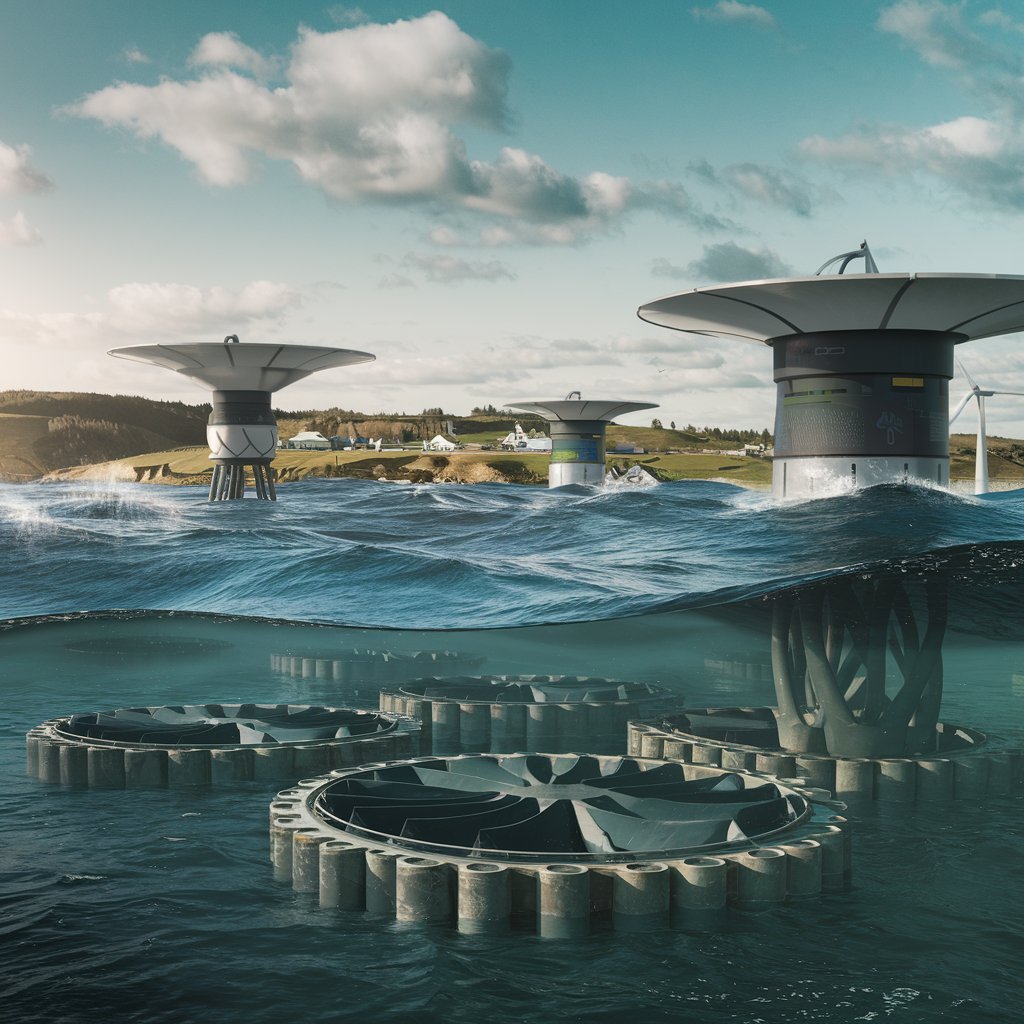Ocean Energy Potential: Unlocking Wave and Tidal Power for a Sustainable Future
As the world strives to address climate change and reduce dependence on fossil fuels, ocean energy is emerging as a key player in the renewable energy landscape. Wave and tidal power, in particular, offer a vast, untapped resource that could significantly contribute to the global energy mix. This article delves into the potential of wave and tidal power, the innovative technologies driving these solutions, their benefits, challenges, and the future outlook of these renewable energy sources.
Understanding Wave and Tidal Power
Ocean energy harnesses the natural movements of seawater to generate electricity. The two primary forms of ocean energy are:
Wave Power: This is generated by capturing the kinetic energy of surface waves. Technologies like point absorbers, oscillating water columns, and attenuators convert the movement of waves into electricity.
Tidal Power: Tidal energy exploits the gravitational pull of the moon and sun on Earth’s oceans, creating predictable tidal currents. It is harvested using tidal stream generators, which capture the kinetic energy of moving water, and tidal barrages, which utilize the potential energy from differences in tidal heights.
The Untapped Potential of Wave and Tidal Energy
The ocean covers more than 70% of the Earth's surface, representing a massive and largely untapped source of renewable energy:
Wave Energy Potential: The global wave energy resource is estimated to be around 32,000 terawatt-hours (TWh) per year, which is approximately twice the world’s current electricity consumption. Coastal areas with consistent, strong wave activity, such as the western coasts of Europe, North America, and Australia, are prime locations for wave energy development.
Tidal Energy Potential: Tidal energy is highly predictable, with significant potential in regions with strong tidal currents, such as the UK, Canada, and South Korea. Globally, tidal energy could contribute up to 1,200 TWh per year, providing a reliable source of renewable electricity.
Innovative Technologies Powering Wave and Tidal Energy
Numerous cutting-edge technologies are being developed to effectively capture wave and tidal energy:
Wave Energy Technologies:
- Point Absorbers: Devices that move with the waves, converting motion into electricity through hydraulic or mechanical systems.
- Oscillating Water Columns: Structures that use the rise and fall of water in a chamber to drive air through a turbine, generating power.
- Attenuators: Long, segmented structures that align with the wave direction, converting movement into energy along their length.
Tidal Energy Technologies:
- Tidal Stream Generators: Underwater turbines that capture the kinetic energy of flowing water, similar to wind turbines but submerged in water.
- Tidal Barrages: Dams built across tidal estuaries that capture the potential energy difference between high and low tides, generating power as water flows through turbines in the barrage.
- Dynamic Tidal Power: A newer concept involving large-scale dams extending into the sea to harness tidal flows, still in developmental stages.
Benefits of Wave and Tidal Energy
Wave and tidal energy offer several unique advantages:
Predictability and Reliability: Tidal energy, in particular, is highly predictable due to the regularity of tidal patterns. This makes tidal power a dependable source of renewable energy, complementing other intermittent sources like solar and wind.
High Energy Density: Ocean energy has a much higher energy density compared to other renewable sources, allowing significant power generation from relatively small installations.
Minimal Visual Impact: Unlike wind turbines or solar panels, wave and tidal installations are mostly submerged, minimizing visual impact on the landscape and seascape.
Environmental Benefits: As a clean energy source, wave and tidal power significantly reduce greenhouse gas emissions, contributing to global climate goals.
Challenges Facing Wave and Tidal Energy
Despite their potential, wave and tidal energy face several hurdles:
High Costs: The current costs of wave and tidal technologies are high compared to other renewable energy sources, mainly due to the early stages of development and the complexities of operating in marine environments.
Environmental and Ecological Concerns: The deployment of ocean energy technologies needs to consider potential impacts on marine ecosystems, including changes in water flow and possible harm to marine life.
Technological Challenges: The ocean environment is harsh, with strong currents, storms, and corrosion presenting significant challenges to the durability and maintenance of equipment. Advanced, robust designs are essential for these technologies to become viable.
Grid Integration and Location: Optimal wave and tidal resources are often located far from population centers and existing grid infrastructure, necessitating significant investments in transmission lines and other infrastructure.
Future Outlook: A Promising Horizon for Wave and Tidal Energy
The future of wave and tidal energy is bright, with ongoing research, pilot projects, and technological advancements pushing the industry forward:
Technological Innovations: Continued improvements in materials, design, and energy conversion technologies are expected to lower costs and enhance the efficiency and reliability of wave and tidal systems.
Government Support: Increased funding, subsidies, and supportive policies from governments can help overcome initial market entry barriers and accelerate the deployment of ocean energy projects.
Collaboration and Investment: Partnerships between governments, private companies, and research institutions are crucial for advancing wave and tidal energy. Boosted investment in R&D will be key to scaling these technologies to commercial viability.
Global Expansion: As wave and tidal technologies mature, there is potential for global expansion, particularly in coastal regions with high energy demands and abundant marine resources. This expansion could provide energy security, reduce carbon emissions, and generate jobs in coastal communities.
Conclusion
Wave and tidal energy hold immense promise as powerful, predictable, and environmentally friendly sources of renewable power. While challenges exist, the potential benefits of harnessing ocean energy are vast. With continued technological advancements and supportive policies, wave and tidal power could play a crucial role in the world's transition to a sustainable energy future, contributing to a cleaner, more resilient global energy portfolio.


